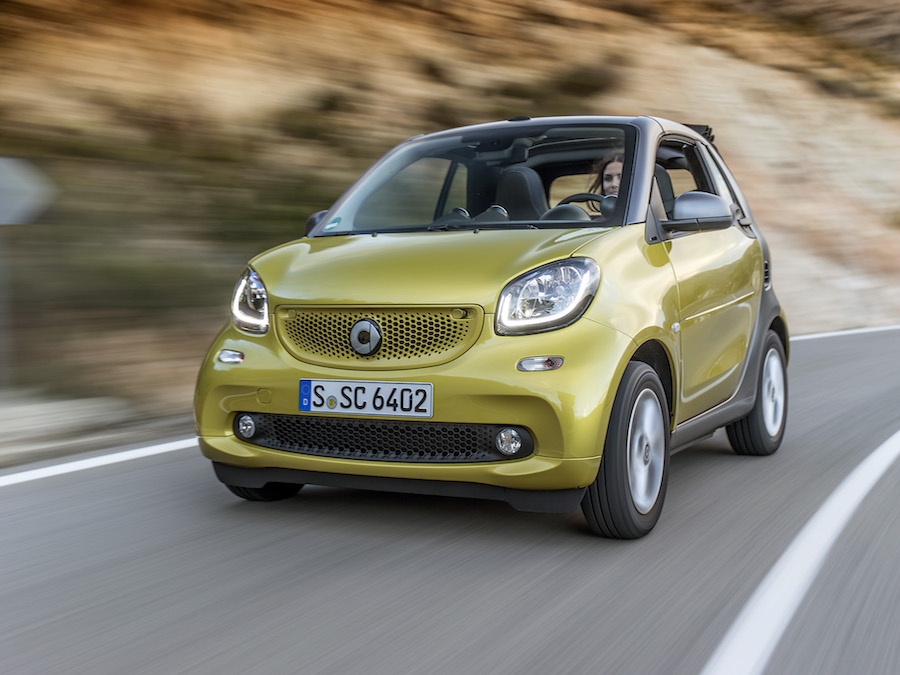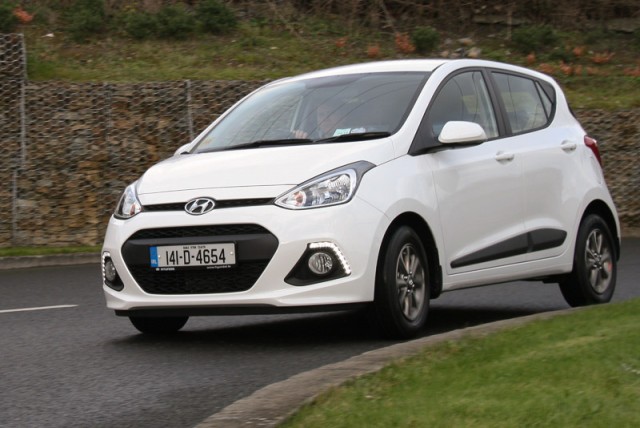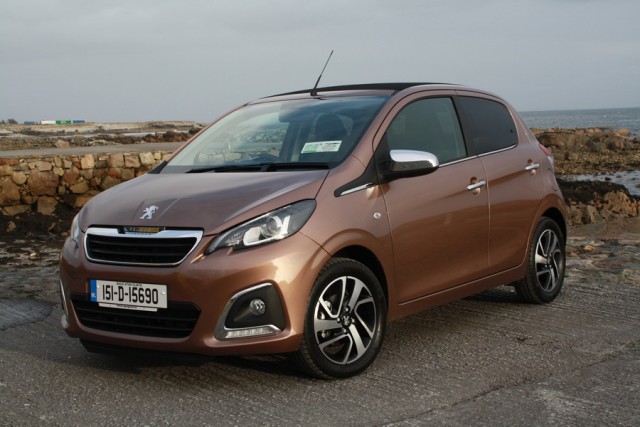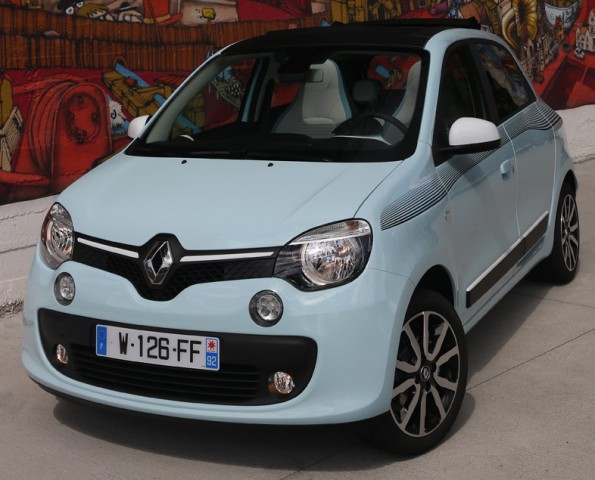The first proper derivative of the latest Smart Fortwo and Forfour models is the Cabrio, which is based on the brand's totemic Fortwo. With a fabric roof and a choice of three 'different' modes of open-air motoring, the chic city car's appeal has undoubtedly been boosted further. The problem is, Smart is one of those marques we don't officially get here in Ireland...
In the metal
When we first saw the third generation of Mercedes' city cars spin-off brand, we weren't impressed by the Smart's looks. This tiny two-seater's formerly clean, unfussy appearance had become characterised by a cartoonish lantern jaw, oversized rear light clusters and a general air of ugliness. But time has quickly altered our opinion - well, it's either that or simply a familiarity with the car. Nevertheless, we like the look of the Fortwo more now than we did a year ago and adding a fabric roof is hardly going to impact on the Smart's cachet. The Cabrio is a handsome little thing and it can pull off some pretty daring colour combinations for its body panels/Tridion safety cell. The roof, black as standard, can even be finished in red if you prefer, although that costs extra.
Let's talk about that roof, which Smart calls the 'Tritop'. That's because it essentially has three disparate modes of open-air driving from which owners can choose, although in reality there's not a huge amount of difference between each. The first and second stages can both be accomplished electrically, either by using the button next to the gear lever in the cabin or by using an equivalent on the new 'flick-out' ignition key that Smart has introduced to replace its clunking old fixed-blade item. Stage one sees the top of the hood fold back in the horizontal plane, rather like a long fabric sunroof; while stage two drops the whole ensemble down to sit pram-like above the boot. Opening the roof using the electric motors can be done with the Fortwo static or on the move (you won't be using the ignition key when in motion, obviously...) right up to the Smart's 155km/h top speed, and getting the soft-top to its breeziest of arrangements takes just 12 seconds.
Stage three involves a human doing a bit more work than merely pressing a button, as those two longitudinal roof bars can be popped out and stored in a special compartment in the back of the fold-down boot lid. It's a relatively simple task to remove or fit them and the fact they can be carried in the car with ease is another testament to the Smart's exceptional packaging ingenuity. There's a decent boot too, the company claiming a scarcely believable 260 litres of cargo capacity, two tall adults will find the cabin perfectly roomy and the Mercedes subsidiary has managed to cram a turbocharged motor, a twin-clutch gearbox, electric roof motors and the relevant drivetrain ancillaries into something just 2.69 metres long. The cherry on the cake is that the cabin is of a very high quality, with some nice design touches evident, although the archaic gear lever the company has foisted onto the DCT model is something of a let-down.
Driving it
No Smart has ever driven as well as the current Fortwo and Forfour generations, but that doesn't mean these cars are flawless. The Cabrio, specifically, has more wind noise around its roof than the hard-top version; as good as Smart (and, by extension, Mercedes) is at making fabric tops, this is simply an inevitability of having the option of open-air driving. As the Cabrio is also 40- to 55kg heavier than the Coupé version, there are minor penalties to pay in terms of economy, emissions and acceleration. And it preserves the regular Fortwo's annoyances of a strange, two-step throttle pedal that only exacerbates the little engine's turbo lag; steering that is bizarrely numb given how physically close your hands are to the front wheels; and a ride that's always on the slightly bobbly side of comfortable - although, with a wheelbase of just 1,873mm, it's more acceptable than you might expect.
Thus, if you think careening around in the Fortwo Cabrio is a hair-raising experience (and we're not talking about the buffeting your hair gets when the Smart's top is down), you'd be wrong. It feels remarkably grown-up and premium in most respects, with the wind and tyre noise as well suppressed as in any other (larger) city car, its body control is reasonably impressive at all times and despite its cutesy appearance, the Fortwo is capable of mixing it on the motorway. It's never quick nor beautifully sharp to drive, but it is at least as entertaining as anything else in this class, thanks to that rear-engined, rear-wheel drive layout and its sub-tonne kerb weight. And while the automated manual was a near-catastrophic weakness of early Smarts, the Twinamic DCT is a decent bit of kit, if not quite up there with the best dual-clutch systems of today.
The Cabrio doesn't seem to lose a lot to the regular model, then, in terms of dynamics, but does the fabric roof massively harm refinement? Not really. OK, with just the 'sunroof' open, there's a lot of turbulence inside at higher speeds, but drop the top entirely and such gusting lessens markedly. And the roof bars make no difference to the open-air experience whether they're in place or not, so it'll purely be for reasons of style that you remove them. All in all - given that to even consider the Smart in the first place, you have to overlook its obvious compromises on outright practicality - adding a folding fabric roof has done nothing to harm its appeal; in fact, it's quite the opposite.
What you get for your money
We'll have to leave this one blank for now, as Smart does not have a presence here in Ireland. However, eco-pressures being what they are, a manufacturer with a wide range of cars that emit sub-100g/km CO2 is surely going to be of appeal in terms of our punitive road tax laws. And if the specs in Ireland were to roughly match those of the rest of Europe, the Fortwo would come with a lot of 'big car' technology (such as cruise control, heated seats, climate control, Bluetooth connectivity and even leather trim on higher models) to make it feel upmarket. The thing is, it's not a particularly cheap car as a regular hatchback and adding a three-stage opening roof is only going to increase the cost. Expect, therefore, any Smart Fortwo Cabrios coming to these shores to list at a price that could otherwise be spent on a pretty decent specification B-segment supermini.
Summary
The Smart Fortwo is aimed at the fashion-conscious customer and so chucking in the extra pose value afforded by its three-stage Tritop roof is hardly going to harm its chances of finding a buyer. It's a neat, compact little package that has some foibles, but at the same time it also has no real, direct competitors that can match it for its urban manoeuvrability. The Cabrio is therefore a fine addition to the Smart canon, so what a shame it is that there are two major hurdles in its way: one, it will be rather expensive if it comes to Ireland; and two, there's no guarantee it will ever make it onto our streets. Pity.





































